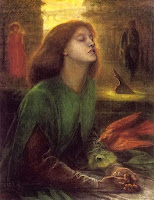
I’ve never ever had any inclination to read Dante’s Divine Comedy before, but I’ve now ordered a copy from Amazon. This is because I have enrolled on a course called Dante’s Florence. My initial interest was Florence not Dante. We have had some beautiful holidays in Italy; the last one (in 2000) was near Florence and then we only had one day in Florence itself. I loved Francesco da Mosto’s TV series on Italy and have wanted to go back to see more of the country – in particular Florence and Venice. So when a friend said she was taking a course on Dante’s Florence I jumped at the chance to find out more.
It was the first session yesterday and I really enjoyed it. This is the description of the course: ‘Studying Dante could not be more divine! Experience the Florence of Dante’s day, including the art and architecture and the poet’s relationship with his native city as conveyed in his writings.’ My impression of Dante’s Inferno was that it is long and difficult and this was reinforced when the tutor said that most people who read The Divine Comedy manage to read through Purgatory and Hell, but few reach Paradise. It’s not necessary to read it for this course, but now I want to know more.
It’s only a six week course and covers a lot of topics including Florentine art and architecture of the thirteenth and early fourteenth centuries, Dante’s relationship with Florence with reference to The Divine Comedy and La Vita Nuova, and his legacy in art and literature.
 Dante’s Florence was a much smaller city than today, but there are still some buildings from that period. I was pleased that I had visited some on our visit in 2000, in particular the Baptistry. This was built in the 11th and 12th centuries and Dante was baptised there in 1265. I remember sitting in the Baptistry, gazing with wonder and admiration at the magnificent ceiling decorations in its dome, and walking on the ancient mosaic floor. I have always been fascinated by mosaics, the intricate patterns and marvelled at their composition.
Dante’s Florence was a much smaller city than today, but there are still some buildings from that period. I was pleased that I had visited some on our visit in 2000, in particular the Baptistry. This was built in the 11th and 12th centuries and Dante was baptised there in 1265. I remember sitting in the Baptistry, gazing with wonder and admiration at the magnificent ceiling decorations in its dome, and walking on the ancient mosaic floor. I have always been fascinated by mosaics, the intricate patterns and marvelled at their composition.
Dante loved learning, hunting and sport, was involved in the struggle for power between the  Church and the State, and fought in the Battle of Campaldino in 1289. The great love of Dante’s life was Beatrice Portinari, who he met when he was nine and she was eight. They never married. Dante and Beatrice by Henry Holiday shows him gazing at her as she passes by ignoring him.
Church and the State, and fought in the Battle of Campaldino in 1289. The great love of Dante’s life was Beatrice Portinari, who he met when he was nine and she was eight. They never married. Dante and Beatrice by Henry Holiday shows him gazing at her as she passes by ignoring him.
I hope we will be looking at the Pre-Raphaelite paintings when the tutor discusses Dante’s legacy to art, as one of my favourite paintings is Beata Beatrix by Dante Gabriel Rossetti. Dante wrote La Vita Nuova in despair at Beatrice’s death and we’ll be studying that next week.

What an awesome class! I’m a touch jealous. 😉
LikeLike
What a great sounding class. I look forward to hearing more about Italy in the next few weeks.
LikeLike
Lucky you! Both for the course and for having gone to Florence. I’ll be interested to hear about what you learn.
LikeLike
I’ll try to write something each week after the course. It’ll help me remember and record the information. I’d love to see Florence again now that I know a bit more of its history.
LikeLike
Enjoy the class! And enjoy The Divine Comedy too — I’ve read and enjoyed The Inferno, but haven’t gotten any farther …
LikeLike